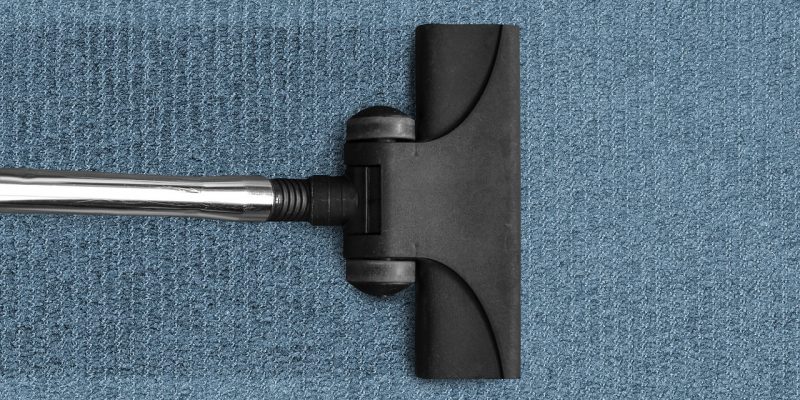Has sneezing become your second language? Are watery eyes and a runny nose the unwanted house guests that won’t leave?
Welcome, dear reader, because you’re in the right place. We’re about to embark on a journey to transform indoor air quality, reduce those pesky allergies, and make your home a haven of freshness.
In many homes, indoor allergens can be as problematic, if not more so, than outdoor allergens. They can range from pet dander and dust mites to molds and pollen that make their way indoors.
Thankfully, there are several strategies you can employ to improve your indoor air quality and reduce your exposure to these common allergens. This article will give you the information you need to tackle indoor allergens. So, let’s explore these strategies together!
Carpet Cleaning Is Key
Unfortunately, carpets are allergen magnets. They can trap pet hair, dust mites, and other allergens deep within their fibers. That makes your snuggling space a hotbed for allergy triggers.
Of course, regular vacuuming is essential, but a professional carpet cleaning service can provide a more thorough solution. For instance, TLC Carpet and Airduct Cleaning in Colorado offer a deep cleaning service that eradicates allergens nested in your carpet fibers.
Enhance Air Quality With Air Duct Cleaning
Air ducts are the respiratory system of your home. And when they’re choked with dust and allergens, your home’s air quality suffers.
Regular air duct cleaning is essential for removing built-up allergens. It will improve the efficiency of your heating, ventilation, and air conditioning (HVAC) system.
Switch to Allergen-Resistant Bedding
In bedrooms, dust mites love to settle in mattresses, pillows, and blankets. Opting for allergen-resistant bedding can reduce your nighttime exposure to these microscopic pests. Encase your mattress and pillows in dust mite-proof covers and consider swapping your traditional bedding for hypoallergenic alternatives.
Use Natural Ventilation
Natural ventilation is a simple yet effective method to improve indoor air quality and reduce indoor allergens. Opening windows and doors, weather permitting, allows fresh air to circulate through your home. Doing this does wonders in diluting the concentration of allergens in your indoor air.
Cross-ventilation, achieved by opening windows on opposite sides of a room or house, can remove stale, allergen-laden air. You can also use exhaust fans, found in kitchens and bathrooms, to draw out air and reduce humidity. Doing this further helps to mitigate allergen levels.
However, it may be better to keep windows closed during peak allergy seasons if you’re dealing with outdoor allergies or the pollen count is high. Consider installing window filters that allow fresh air in while filtering out some allergens.
Maintain Your Air Filter
The air filter in your HVAC system plays a crucial role in maintaining indoor air quality. It traps particles and allergens circulating in your home’s air.
So be sure to keep it clean and in good condition. A clean air filter not only helps reduce allergens but also helps your HVAC system run better.
Dehumidify Your Home
Many allergens, like dust mites and mold, thrive in humid environments. Maintaining a relative indoor humidity level of around 30-50% can help keep them at bay. A dehumidifier can help achieve this balance, especially in damp areas like basements or bathrooms.
Rely on Regular Cleaning
While carpet and air duct cleaning focus on specific allergen hotspots, general cleaning is just as essential. Dust and wipe surfaces regularly, wash bedding weekly in hot water and try to minimize clutter where dust can collect.
Introduce Regular Grooming For Pets
Pets can be a significant source of indoor allergens due to the dander they shed. This dander, which consists of microscopic pieces of skin, can quickly become airborne and trigger allergic reactions. However, regular grooming can help reduce the amount of dander your pet shed.
To control pet allergens, brush your pets outside the house daily. This practice will remove excess fur and dander before it can circulate in your home’s air.
Also, regular baths can keep your pet’s skin healthy and reduce dander production. If your allergies are severe, consider hiring a professional pet groomer.
It’s also noteworthy that allergens can linger in pet beds and toys. Therefore, it’s beneficial to wash these items regularly. And limit your pets’ access to certain areas, like the bedroom, to minimize allergen accumulation in those spaces.
Consider Allergen-Resistant Plants
Certain houseplants, like spider plants and peace lilies, can naturally improve indoor air quality by absorbing toxins while releasing clean oxygen. However, overwatering can lead to mold growth. So it’s crucial to care for them properly.
Invest in a Good Quality Air Purifier
A good quality air purifier can help reduce airborne allergens. Look for indoor air cleaners with a High-Efficiency Particulate Air (HEPA) filter, as they can capture particles as small as 0.3 microns.
Every step to reduce indoor allergens contributes to a healthier and more comfortable living environment. But, remember, the goal is to reduce allergens, not eliminate them – a feat nearly impossible due to the continuous introduction of allergens into our homes.
By combining these strategies, you can reduce the allergen concentration in your home. Doing this promotes improved health and comfort for everyone there.
Say Goodbye to Indoor Allergens: Take Action Today!
Are you ready to reclaim your home from indoor allergens? Start taking action today!
Implement these simple yet effective strategies, and see the difference in indoor air quality. Let’s create a healthier, allergen-free home together.
Thank you for joining us towards a cleaner, fresher home. We’re rooting for you, and we hope you’ll continue to seek out our articles for more tips, advice, and insight into maintaining a healthy living environment. Remember, a healthier home is just a few steps away!




















